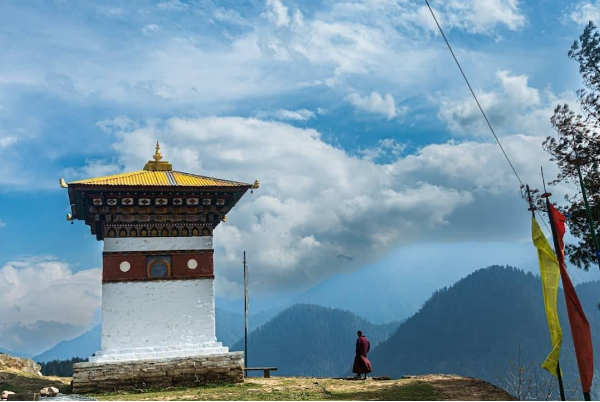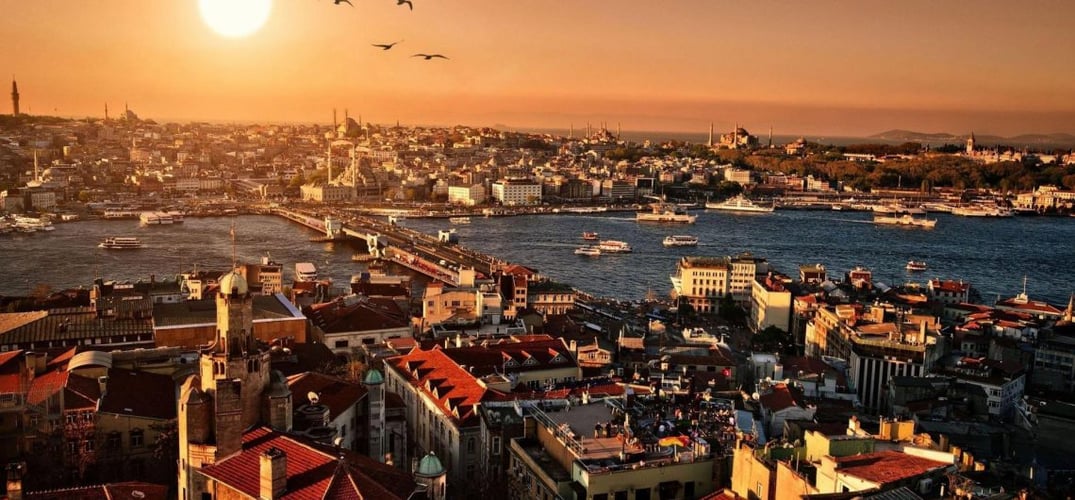Central Vietnam: Your Guide to the Shore’s Best-Kept Stories

If you’re here, don’t just skim, stay. The pages ahead will show you not just where to go but how to be in Central Vietnam. This guide takes you beyond the usual routes from Hue’s poetic streets to Hoi An’s fading yellow walls, from Da Nang’s passes and plantations to Nha Trang’s beaches. Along the way, you’ll taste family recipes passed down for generations, wander through markets where every stall has a story and pause in landscapes that have endured centuries of change. Whether you’re seeking history, nature, or moments of stillness, this is your companion to experiencing Central Vietnam in a way that feels personal, meaningful and entirely your own.
Why Central Vietnam? Because it is in the slow breath of the land, in its moss-covered stones, its languid rivers and its solemn streets that Central Vietnam reveals itself most truthfully. In Hue, the Perfume River drifts by as if in no hurry to reach the sea, carrying with it soft whispers of the past. The old Citadel stands with quiet pride, and the emperors’ tombs, though weathered, seem at peace with time. Travel a little further and you reach Da Nang, where mornings begin with the sea and evenings end with the breeze. The road winds across the Hải Vân Pass, a stretch where the mountains lean into the clouds and the ocean smiles back from below.
Then there is Hội An, a town that seems to light itself from within. The walls glow yellow in the sun, the lanes are narrow and friendly, and lanterns swing gently as if they too enjoy the breeze. At night, the river becomes a mirror of light, dotted with paper lanterns floating away, each one holding a wish. Beyond, in Phong Nha, the earth opens into caves vast and echoing, while the jungle stands watch outside, alive with birdsong and the hum of cicadas. Nearby, the ruins of Mỹ Sơn rise quietly from the green -not sad, not broken, just content to remain a part of the landscape.
And finally, the sea greets you once more in Nha Trang. The water is clear, the sky generous and the islands scattered as though someone had left stepping stones for you to follow. Here, days slip into evenings without fuss- a swim, a walk, perhaps a plate of fresh seafood by the shore. That is the charm of Central Vietnam: a balance of movement and stillness, of history and everyday life. It is a place that doesn’t leave in a hurry and neither will you.
FAQs
Is Travelling to Central Vietnam worth it?Ans: Absolutely, It’s home to some of Vietnam’s most iconic stops - Da Nang’s beaches, Hoi An’s UNESCO-listed Old Town, and Hue’s imperial citadel, all within easy reach of each other. Add in great food, good value, and year-round activities and you’ve got a region that’s easy to explore and hard to forget.
What food must I try while in Central Vietnam?Ans: Da Nang is a coastal city, so seafood is a must. Try it fresh at the local night markets or beachfront restaurants. Don’t miss mi quang- the city’s signature turmeric-yellow noodle dish topped with shrimp, pork, and fresh herbs. Banh xeo (crispy Vietnamese pancakes) and bun cha ca (fishcake noodle soup) are other local favourites. For a snack, grab some banh mi from a street stall, and if you have a sweet tooth, finish with a cup of creamy coconut coffee.
How much time do I need to travel around Central Vietnam?Ans: For most travellers, 5 to 6 days is enough to cover the highlights. Da Nang’s beaches, Hoi An’s Old Town, and Hue’s imperial heritage at a relaxed pace. If you add side trips like the Hai Van Pass, Ba Na Hills or Phong Nha’s caves, plan for 7 to 9 days. The region is compact and well-connected, so you can see a lot without long travel days.
Table of Contents
Chapter 1: Planning Your Trip
Best Time to Visit
How Many Days Do You Need?
Entry Points & Getting Around
Travel Tips for Central Vietnam
Chapter 2: Destinations of Central Vietnam
Da Nang
Hoi An
Hue
Phong Nha
Nha Trang
Chapter 3: Must Have Experiences
FestivalsCulinary Trails of Central Vietnam
Cultural Immersions (Handicrafts, Markets)
Nature & Adventure (Hiking, Caving, Biking, Waterfalls)
Chapter 4: Where to Stay
Da NangHoi An
Phong Nha
Chapter 5: Sample Journeys
6-Day Central Vietnam Highlights5-Day Central Vietnam Immersive
8-Day Central Vietnam Experiential
CHAPTER 1
When is the best time to visit Central Vietnam?
To fully appreciate the beauty of this region, choosing the right time to visit is crucial. Central Vietnam enjoys a tropical monsoon climate, with distinct wet and dry seasons that can shape your travel experience. The best time to visit is from February to May, when the weather is generally dry, sunny, and warm, with daytime temperatures averaging between 25°C and 30°C (77-86°F). This is a great time for outdoor exploration: strolls through Hoi An’s lantern-lit old town, lazy afternoons on Da Nang’s My Khe Beach or visiting the royal tombs and citadel of Hue under clear skies.
If you’re planning a beach-focused trip, the summer months from June to August are also popular. Expect hotter days often reaching 35°C (95°F) but still plenty of sunshine. This is peak time for swimming, surfing, and island-hopping around hotspots like Cua Dai and Lang Co. Adventure seekers can also head inland to explore caves, zip-lines, and jungle trails around Phong Nha or the Dark Cave area.
The rainy season runs from September to November, bringing frequent downpours and the occasional typhoon. While travel disruptions are possible, the countryside bursts into lush green, and crowds thin out- ideal if you're after a quieter experience. The cooler winter months of December and January (18–25°C/64–77°F) are good for cultural travel, especially in Hue and Hoi An, though the beach scene is more subdued.
How many days do you need?
If you’re wondering how many days you really need for Central Vietnam, the sweet spot is about 6 to 8 days. That gives you just enough time to dip into its beaches, lantern-lit towns, imperial history and jungle adventures without rushing through. Most travellers kick things off in Da Nang, a breezy coastal city that’s as much about golden sands as it is about marble mountains and that unforgettable drive across the Hải Vân Pass. From here, it’s a short hop to Hội An, where life slows down among yellow-painted houses, riverside cafés and lanterns that make the whole town glow at night.
No trip feels complete without Huế, the old imperial capital, where tombs, pagodas, and the Perfume River hold echoes of Vietnam’s royal past. If adventure calls, head inland to Phong Nha- home to caves so vast and otherworldly they’ll leave you speechless. And for those who can’t resist turquoise seas and island-hopping, Nha Trang is the perfect finale, mixing laid-back beach days with just the right amount of nightlife. In a week, you’ll have tasted the best of Central Vietnam- history, culture, adventure and pure relaxation and trust me, it’ll still leave you wanting more.
Entry Points & Getting Around
Well-connected by air, road, and rail, Central Vietnam is surprisingly easy to navigate. The region’s major hub is Da Nang International Airport which serves both domestic flights (from Hanoi, Ho Chi Minh City, and beyond) and select international routes (mostly from Southeast Asia). From here, you’re less than an hour’s drive from Hoi An and about four hours from the caves of Phong Nha. Vietnam’s north-south Reunification Express railway also stops at key cities like Hue, Da Nang, and Dong Hoi, offering a scenic and comfortable alternative to buses or flights, especially for longer stretches.
Bus and minivan networks are extensive and budget-friendly, connecting towns like Hoi An, Da Nang, Hue, and Phong Nha with decent frequency. While buses are slower, they offer a chance to see the countryside and meet fellow travellers. In smaller towns like Hoi An or Phong Nha, bicycles, scooters, or private taxis are the most convenient ways to get around. Grab (Vietnam’s ride-hailing app) operates in cities like Da Nang and Hue, offering cheap and easy transport. For intercity travel with more comfort, private car hire or limousine vans (with Wi-Fi and AC) are increasingly popular with travellers looking for flexibility.
Trains: Central Vietnam is well connected by Vietnam’s North-South Reunification Railway, offering a scenic and comfortable way to travel between major destinations like Da Nang, Hue, and Dong Hoi. Trains are relatively affordable and offer various classes. The route between Hue and Da Nang is particularly scenic, hugging the coastline and passing through the Hai Van Pass. Do try to book a daytime seat on the left side of the train when heading south for the best views. Tickets can be booked onlineonline, at stations or via travel agencies but advance booking is recommended during holidays.
Buses: Intercity buses are widely available and offer budget-friendly travel across the region. Sleeper buses run frequently between cities such as Hoi An, Da Nang, Hue, and further afield to Nha Trang or Phong Nha. Most long-distance buses are equipped with reclining seats or sleeper berths and depart from central bus stations or designated offices. For shorter trips, minivans and local buses serve smaller towns and villages, although schedules can be irregular. While buses are a great option for cost-conscious travelers, road conditions and travel times can vary, especially during the rainy season.
Ferries & Boats: While not the main mode of transport in Central Vietnam, ferries and boats are available for select routes. In Da Nang, you can take boat rides along the Han River for a more scenic view of the city. From Cua Dai Port near Hoi An, speedboats and ferries connect to the Cham Islands (Cu Lao Cham) - a popular day trip for snorkeling and beach time. Some rural areas around the Perfume River in Hue also offer small boat rides, especially for temple visits or sunset cruises, providing a more atmospheric alternative to road travel.
Flights: If you're short on time or traveling long distances, domestic flights are the quickest option. Da Nang International Airport is the main hub in Central Vietnam with regular connections to Hanoi, Ho Chi Minh City, and other regional airports like Hue and Dong Hoi. Flights are frequent, competitively priced and usually under 90 minutes in duration. Budget carriers such as VietJet Air and Bamboo Airways operate alongside Vietnam Airlines, offering multiple daily departures. Just be aware that delays are not uncommon, especially during the wet season, so keep some buffer time in your itinerary.
Travel Smart in Central Vietnam: 10 Quick Tips
-
Time it right – February to May gives you sunshine without the storms.
-
Go slow in Hoi An – linger till the lanterns glow after dark.
-
Ride the rails – the Hue–Da Nang train is Vietnam’s prettiest journey.
-
Pack for surprises – beaches scorch, caves chill, rains appear uninvited.
-
Eat regionally – bún bò in Hue, cao lầu in Hoi An, mì quảng in Da Nang.
-
Respect the sacred – temples and tombs are living spaces, not sets.
-
Cash is king – keep small notes handy beyond city centres.
-
Plan for lanterns – Hoi An’s festival is magical but fills fast.
-
Let rain slow you down – there’s always coffee to wait it out.
-
Mix it up – pair citadels with beaches, caves with cafés.
- ______________________________________________________________________________
CHAPTER 2
Places to Visit in Central Vietnam
Danang: Wedged between mountains and the sea, Da Nang is Central Vietnam’s modern face with a laid-back soul. The city hums with coffee shops, buzzing markets, and a riverside that comes alive after dark, yet it never loses its easy coastal calm. Equal parts cosmopolitan and laid-back, it’s the kind of place where mornings start with strong coffee, afternoons drift by the water, and nights glow with a relaxed, cheerful buzz. Here are the most famous places to visit :
Bana Hills: There’s something strangely touching about Bà Nà Hills. Maybe it’s the way the fog drapes over castle spires that were never really castles or how children run through cobbled squares. Built on a former French hill station just outside Da Nang, this mountain-top escape feels both surreal and sincere. The Golden Bridge-those giant stone hands holding up a walkway in the sky feels like it shouldn’t work, but it does. Families pose for photos, couples whisper under the mist and somewhere between the fantasy facades and pine trees, it all starts to feel a little magical. Not because it’s real but because people want it to be.
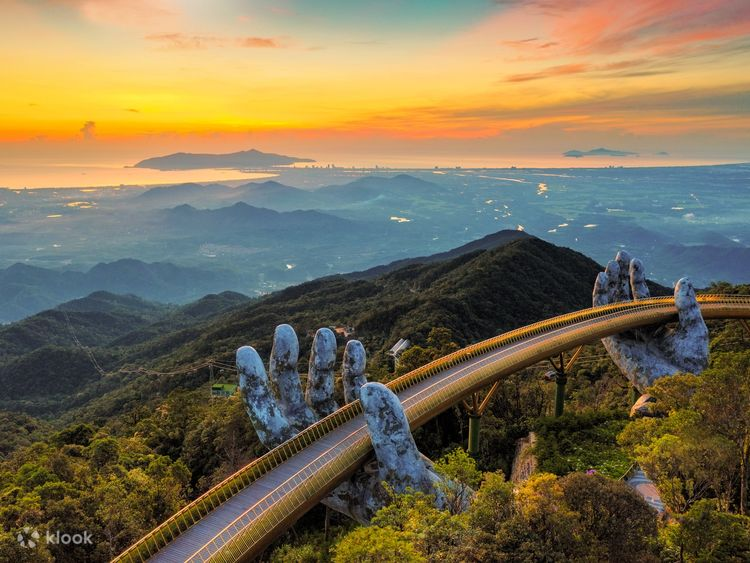
Marble Mountains: Five limestone peaks rise abruptly from the earth, like ancient fingers reaching skyward each named after an element-metal, wood, water, fire and earth. The scent lingers as do the echoes of monks who once murmured prayers into stone. More than a landscape, the Marble Mountains are a memory made solid: holding stories, silence, and centuries of faith.

My Son Sanctuary: My Son Sanctuary, nestled in a jungle-clad valley about 40 km from Hoi An, is a UNESCO World Heritage Site and one of Vietnam’s most important archaeological treasures. Once the spiritual heart of the ancient Champa Kingdom, this complex of Hindu temples was built between the 4th and 13th centuries and dedicated to Lord Shiva. Though many of the structures were damaged by time and war, the surviving red-brick towers and intricate carvings still stand in quiet dignity, offering a glimpse into a civilization that once thrived in Central Vietnam. Surrounded by misty hills and wrapped in vines, Mỹ Sơn is a place where history, nature, and spirituality gently converge.

Hoi An: Hoi An is one of Central Vietnam’s most iconic destinations and a UNESCO World Heritage Site, known for its remarkably well-preserved Ancient Town. Once a bustling trading port between the 15th and 19th centuries, the town is now famous for its lantern-lit streets, yellow-painted shophouses, and a harmonious mix of Vietnamese, Chinese, Japanese, and European architecture.Visitors can stroll through narrow alleys lined with tailor shops, sample local specialties like cao lầu and white rose dumplings, and take boat rides along the Thu Bồn River. Beyond its charm, Hội An also offers cultural experiences like cooking classes, pottery villages, and the monthly Lantern Festival, making it a must-visit for travellers seeking both history and atmosphere.
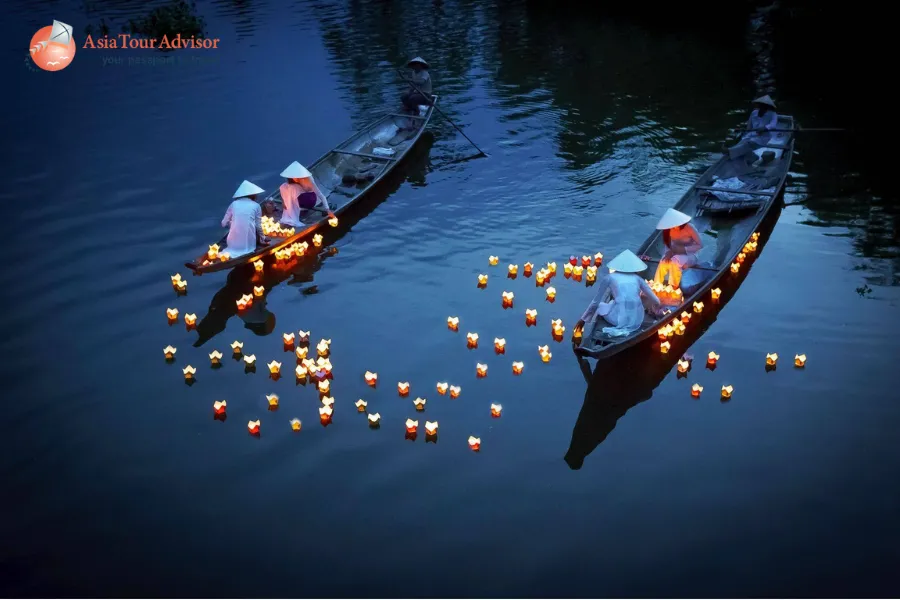
Hue: Hue is a historically significant city that served as the imperial capital during the Nguyen Dynasty from 1802 to 1945. The city is home to the UNESCO-listed Imperial City (Dai Noi) a complex of palaces, temples, gates, and gardens enclosed by a moat and stone walls. Along the Perfume River, you’ll find the elaborately designed royal tombs of emperors like Minh Mạng, Khai Dinh, and Tu Duc, each offering insight into Vietnam’s regal past. Hue also boasts important spiritual sites, such as the iconic Thien Mu Pagoda and is known for its refined imperial cuisine, featuring dishes like bun bo Hue and intricately prepared royal appetizers. Ideal for history buffs and culture seekers, Hue offers a quiet, reflective contrast to Vietnam’s more bustling destinations.

Hai Van Pass: It is a scenic mountain pass that stretches along National Route 1 between Da Nang and Hue, offering one of the most breathtaking coastal drives in Vietnam. At nearly 21 kilometers long and reaching an elevation of about 500 meters above sea level, the pass winds through lush mountains, with panoramic views of the East Sea on one side and misty peaks on the other. Known historically as the "Ocean Cloud Pass," it once marked the boundary between the kingdoms of Champa and Đại Việt and later served as a strategic military route. Today, it’s a popular route for motorbike riders and road trippers seeking stunning vistas, photo stops, and a quieter alternative to the tunnel bypass. The pass is also home to French-era bunkers and lookout points that add historical depth to the natural beauty.
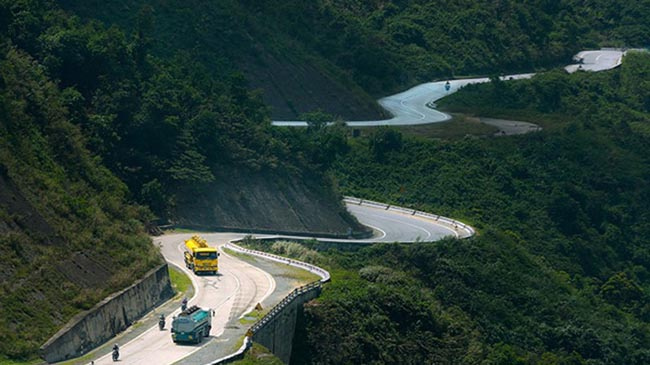
Phong Nha: Phong Nha, a serene town nestled in Quảng Bình Province, is the gateway to the extraordinary Phong Nha-Kẻ Bàng National Park, a UNESCO World Heritage Site famed for its dramatic limestone mountains and vast underground cave systems. Home to the world’s largest cave, Son Doong, as well as other remarkable formations like Paradise Cave, Phong Nha Cave, and Dark Cave, the region offers some of the most unique geological wonders on Earth. Visitors can explore these natural marvels through riverboat rides, jungle treks, zip-lining, or guided cave expeditions. The surrounding landscape of rice paddies, winding rivers, and quiet local villages adds to its charm, making Phong Nha not just an adventure hub, but a peaceful retreat into Vietnam’s wild, untouched beauty.
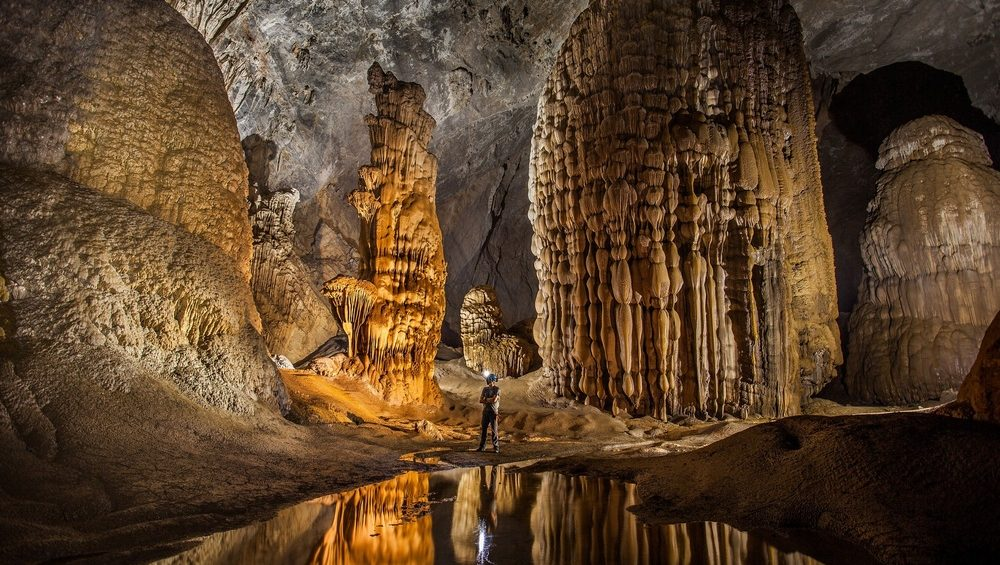
Nha Trang: It is located along Vietnam’s south-central coast, is a popular beach destination known for its long stretches of golden sand, clear turquoise waters, and lively seaside atmosphere. The city offers a wide range of water-based activities, including snorkeling and scuba diving around Hon Mun Island, known for its vibrant coral reefs, and Hon Tre Island, home to resorts and quiet beaches. Visitors can also enjoy island-hopping boat tours, mud baths, or a walk along the bustling beachfront promenade lined with seafood restaurants, night markets, and beachside cafés. With a good mix of relaxation, adventure, and local culture, Nha Trang is an ideal stop for travellers looking to unwind by the sea while still exploring Vietnam’s coastal charm.

CHAPTER 3
The festivals that you must experience
Hoi An Lantern Festival: Every full moon, the lanterns come out in Hoi An. The Old Town switches off its electric lights and the ancient streets glow under the soft, flickering light of handmade silk lanterns. On the Thu Bon River, locals and visitors alike float paper lanterns with candles inside- a simple act of offering, remembrance, or quiet wish-making.The festival is rooted in Buddhist traditions that honour ancestors and encourage reflection. But it’s also a visual feast: street performances, folk games, and traditional music spill out into lantern-lit alleys.

- When: Every full moon (14th day of the lunar month)
- Don’t Miss: Renting a sampan to float your own lantern under the Japanese Covered Bridge
- Tip: Book accommodation in or near the Old Town well in advance, gets busy on festival nights.
Hue Festival: Held every two years in Vietnam’s former imperial capital, the Hue Festival is a full-scale celebration of culture, art and royal heritage. It’s where dragon dances meet avant-garde theatre and re-enactments inside the ancient citadel come to life with a 21st-century flair. Expect a packed calendar: from ao dai fashion shows and court music performances to international dance troupes and street parades. Stages pop up across the city along the Perfume River, inside the Forbidden Purple City and on quiet temple grounds that suddenly fill with light.
- When: Biennially (Next edition expected in 2026, usually April–June)
- Don’t Miss: The Royal Night performance- a dramatic re-creation of the Nguyen Dynasty’s ceremonial court life
- Tip: Some events are free, others ticketed. Check the official festival schedule early and reserve in advance, especially for performances inside the Citadel.

Da Nang International Fireworks Festival (DIFF): Da Nang may be best known for its beaches and bridges but come summer, the sky becomes its biggest attraction. Over five weekends in May and June, international teams from around the world compete in one of Asia’s most dazzling fireworks competitions. Each night has a theme - love, peace, dreams with performances choreographed to music and staged from a platform on the Han River. Beyond the pyrotechnics, there’s a festive atmosphere all across the city. Streets fill with food stalls, live music, and families staking out their favourite viewing spots. It’s loud, joyful, and a little chaotic but in the best way possible.
- When: Annually, May–June (over 5 weekends)
- Don’t Miss: Fireworks viewed from a rooftop bar- Novotel, Brilliant Hotel, or Sky 36 are all good bets
- Tip: Get to the riverside early, especially on finale night. Or book a boat cruise for a floating front-row seat.

A Taste of Central Vietnam
If Vietnam is a feast for the senses, then Central Vietnam is its most refined course - a region where every dish carries whispers of empires, local lore, and coastal abundance. From imperial delicacies in Hue to street-side noodles in Hoi An and Da Nang, the central coast tells you stories while feeding you.
Once the seat of the Nguyen Dynasty, Hue wears its culinary legacy with pride. Here, food is an art, ritual and memory. Start your day with a steaming bowl of bún bò Huế, the city’s iconic beef noodle soup. Rich with lemongrass, chili oil, fermented shrimp paste, and slow-cooked broth. For a taste of royal finesse, head to the local markets or humble roadside stalls and try bánh bèo (steamed rice cakes with dried shrimp and scallion oil), bánh bột lọc (translucent tapioca dumplings with shrimp and pork) or the crunchy delight of bánh khoái- Hue’s answer to the Vietnamese pancake, paired with a thick, peanut dipping sauce. Hue’s culinary culture is defined by balance: heat is softened by sweet, and richness is cut with fresh herbs. Many of these dishes trace their roots back to the royal court, where meals once featured dozens of small, meticulously crafted dishes, each served in order, like verses of a well-written poem.

Banh Bot Loc

Bun Bo Hue
In contrast to Hue’s imperial restraint, Hoi An offers a humbler, warmer kind of comfort -one that unfolds slowly as you wander its lantern-lit streets. The town’s signature dish, cao lầu, is as unique as its old-world architecture. Made with water from a specific well and ash from nearby Cham Island, the noodles are thick, chewy, and slightly smoky- topped with roast pork, crispy rice crackers, fresh greens, and a spoonful of deeply savoury broth. It’s a dish that can only truly exist here,a blend of Hoi An’s Chinese, Japanese, and Vietnamese heritage in a single bowl. A short ride away in Da Nang, the food scene shifts again. Here, mì Quảng takes centre stage - turmeric-yellow rice noodles served with a modest amount of broth and an explosion of toppings: shrimp, pork, quail eggs, crushed peanuts, herbs and sesame rice crackers. Add a squeeze of lime and a dash of chili, and you’ve got the flavours of central Vietnam in their most vibrant form. Don't miss the bánh xèo either - sizzling savoury pancakes that you roll in mustard leaves with herbs and dip into sweet-sour fish sauce. It's DIY dining at its most delicious.

Cau Lau

Banh Mi
In villages around Quảng Trị and Thanh Hóa, you might try nem chua- fermented pork rolls wrapped in banana leaves, spiced with garlic and chili and left to mature until tangy and tender. Perfect with a cold beer on a hot evening. What ties all these experiences together isn’t just the ingredients - it’s the way each meal is grounded in place. Dishes are plated with care but never pretension, eaten with hands or chopsticks, always shared. The fish sauce is house-made, the herbs are picked fresh, and meals often end the way they start with a smile and another helping.

Egg Coffee

Nem Chua
Cultural Immersions (Handicrafts, Markets)
Central Vietnam’s handicraft villages are some of the best places to see tradition alive in daily life. In Hue, the art of conical hat making continues much as it did centuries ago, women sit in quiet courtyards layering palm leaves, stitching them carefully until the familiar “nón lá” shape emerges. Just outside the city, Thanh Tien village is known for its paper flowers, once used for offerings during festivals and now admired for their intricate beauty. Meanwhile, in Hoi An, lantern-making has become both a livelihood and a symbol of the town itself. Visitors can step into these workshops, learn the process firsthand, and carry home something that isn’t just handmade, but rooted in memory and culture.
Markets, too, are at the heart of the region’s cultural immersion. Da Nang’s Han Market is a lively maze where locals buy daily essentials ,from fresh seafood brought in at dawn to piles of tropical fruits and handwoven fabrics. It’s as much about people-watching as it is about shopping. In Hue, Dong Ba Market has a slightly more old-world feel. Here, you’ll find everything from spices and lacquerware to steaming bowls of bún bò Huế served at small corner stalls. These markets are where the character of the city reveals itself - noisy, colorful, and wonderfully human.
Exploring these spaces is less about ticking sights off a list and more about engaging with the rhythm of everyday life. A morning spent learning how a lantern takes shape, or an afternoon wandering through a bustling food market, gives you an intimacy with Central Vietnam that no monument or museum can match. They are places where culture is not preserved in glass cases but lived, traded, eaten, and handed down.
Nature & Adventure (Hiking, Caving, Biking, Waterfalls)
Central Vietnam has plenty to offer travelers who want to combine culture with the outdoors. Hiking is best around Bach Ma National Park, located between Hue and Da Nang, where well-marked trails lead through dense forest to waterfalls and viewpoints overlooking lagoons and the South China Sea. The park’s cooler temperatures make it a refreshing escape from the coast. In the lowlands, Hoi An and Hue’s countryside are ideal for cycling - quiet rural roads take you past rice paddies, lotus ponds, and village markets, offering a closer look at everyday life.

The region is also home to some of the world’s most impressive caves. Phong Nha-Ke Bang National Park is UNESCO-listed and famous for its vast underground systems. Options range from easy boat rides into Phong Nha Cave, to guided treks into Paradise Cave, or more challenging multi-day expeditions to Hang En and the world’s largest cave, Son Doong. Even short tours provide a chance to explore remarkable stalactites, underground rivers, and cathedral-like chambers.
For those chasing waterfalls, there are several natural swimming spots worth adding to an itinerary. Elephant Springs near Hue is popular for a day trip, with rock pools and shaded picnic areas. Around Da Nang, smaller falls can be reached with short hikes into the hills, while in Phong Nha’s jungle, hidden cascades reward those willing to trek a little further. Together, hiking, biking, caving, and waterfall visits make Central Vietnam one of the country’s best regions for travelers looking to balance cultural immersion with outdoor adventure.

CHAPTER 4
Popular Places to Stay:
Danang
- InterContinental Danang Sun Peninsula Resort (5-star)
A dramatic Bill Bensley-designed hideaway nestled between the Son Tra mountains and the sea. Expect private beach access, lavish villas, and a spa that’s a destination in itself. Ideal for honeymooners or anyone ready to splurge. - Hyatt Regency Danang Resort & Spa (5-star)
Sleek and family-friendly, this beachfront resort offers multiple pools, wellness options, and easy access to Marble Mountains. - Monarque Hotel (4-star)
A good mid-range pick with royal-themed décor, rooftop pool and complimentary afternoon tea. Great value, just steps from My Khe Beach.
- Altara Suites by Ri-Yaz (4-star)
Spacious serviced apartments perfect for longer stays or families, complete with kitchenettes and sea-facing balconies. - Raon Danang Beach Hotel (3-star)
Budget-friendly and clean with easy beach access. Great for short stays with all the essentials covered.
Hoi An
- Four Seasons Resort The Nam Hai (5-star)
This beachfront retreat outside Hoi An is known for its expansive villas, water gardens and curated wellness experiences. It’s the kind of place where you arrive and forget the date.
- Anantara Hoi An Resort (5-star)
Charming and colonial, this riverside resort is walkable to Old Town but blissfully quiet. Rooms open to garden courtyards and slow mornings.
- La Siesta Hoi An Resort & Spa (4-star)
Elegant with heritage aesthetics, set between rice paddies and the Thu Bon River. Multiple pools, strong cocktails and a free shuttle to the beach seal the deal.
- Hoi An Central Boutique Hotel & Spa (4-star)
Close to Old Town, this boutique stay offers understated style, complimentary bicycles and a friendly vibe. - Vinh Hung Library Hotel (3-star)
Quirky, colourful and just off the main walking street — a favourite with travellers who like character on a budget.
Phong Nha
- Chay Lap Farmstay & Resort (Luxury/Boutique)
Phong Nha doesn’t do glitz, but Chay Lap gets close. Nestled between karst cliffs and rural roads, it’s ideal for relaxing between cave treks.
- Victory Road Villas (Luxury/Boutique)
Riverfront villas with kitchenettes, large windows and serious comfort. One of the most polished stays in the region.
- Phong Nha Farmstay (4-star equivalent)
An original in the area. This family-run spot offers French colonial vibes, saltwater pool, and sweeping views over rice fields.
- Phong Nha Lake House Resort (4-star equivalent)
Serene lakeside setting, bungalow-style rooms and kayak rentals. A sweet pick for couples or families.
- Areca Bungalow (3-star)
Wooden bungalows, warm hosts, and good food — the kind of place where you’ll end up staying longer than planned.
CHAPTER 5
Sample Journeys
- Option 1: Central Vietnam (6 Days) - Spend six soulful days tracing the coastline and culture of Central Vietnam, where rivers remember stories and lanterns light up the night. Begin in Da Nang, a breezy coastal city where golden beaches meet marble peaks and dragon bridges breathe fire. Then move to Hoi An, the old-world town of silk lanterns, tailors, and riverside cafés - best explored on foot or by bicycle through lush rice paddies. Set aside a day to wander the crumbling yet magnificent Cham temples at My Son Sanctuary, hidden in jungle mist and mythology. Here’s a link to a suggested itinerary : 6 Days Central Vietnam
- Option 2: Central Vietnam (5 days)- In five unhurried days, follow Central Vietnam’s curve of coast and culture, where the air smells faintly of salt and the nights shimmer with lantern light. Start in Da Nang, a seaside city where golden sands stretch beneath the watchful gaze of marble peaks and a dragon-shaped bridge breathes fire into the night. Then drift south to Hoi An, a riverside town stitched together with history, silk, and the hum of bicycles. Spend your mornings wandering vibrant markets and your afternoons pedalling past rice paddies that glint in the sun. As dusk falls, take to the Thu Bon River for a slow boat ride, watching the old town ignite in the warm glow of lanterns. Here’s a link to a suggested itinerary :5 Days Central Vietnam
- Option 3: Central Vietnam (8 days)- A 8 day journey through Central Vietnam lets you experience the region’s soul. Begin in Da Nang, easing into coastal life before taking the dramatic drive across the Hải Vân Pass into Hue, where imperial citadels, royal tombs, and the gentle flow of the Perfume River set the tone for reflection. Journey inland to Phong Nha, where vast caves and jungle trails bring a sense of awe and adventure in equal measure. From there, continue south to Hoi An, a riverside town that glows with lanterns by night and invites slow mornings cycling past rice fields, afternoons in cooking classes, and evenings drifting along the Thu Bồn River. Ten days here offer more than sightseeing - they let you taste history, breathe in nature, and discover the quiet joy of travelling at Vietnam’s pace. Here’s a link to a suggested itinerary :8 Days of Experiential Central Vietnam
Conclusion
Travelling through Central Vietnam is like stepping into a story that unfolds slowly, in the hush of rivers, the glow of lanterns, and the quiet pride of old citadels. It is a place that teaches you to sip coffee as the rain drifts by, to smile back at strangers in a market, to let a sunset linger without rushing to capture it. Here, the past does not fade, it walks beside you, soft and unhurried.
If this is the kind of journey you’re looking for, let Offbeat Tracks take you there. We’ll help you experience Central Vietnam in the most authentic way- through its stories, its flavours, and its gentle rhythm.

